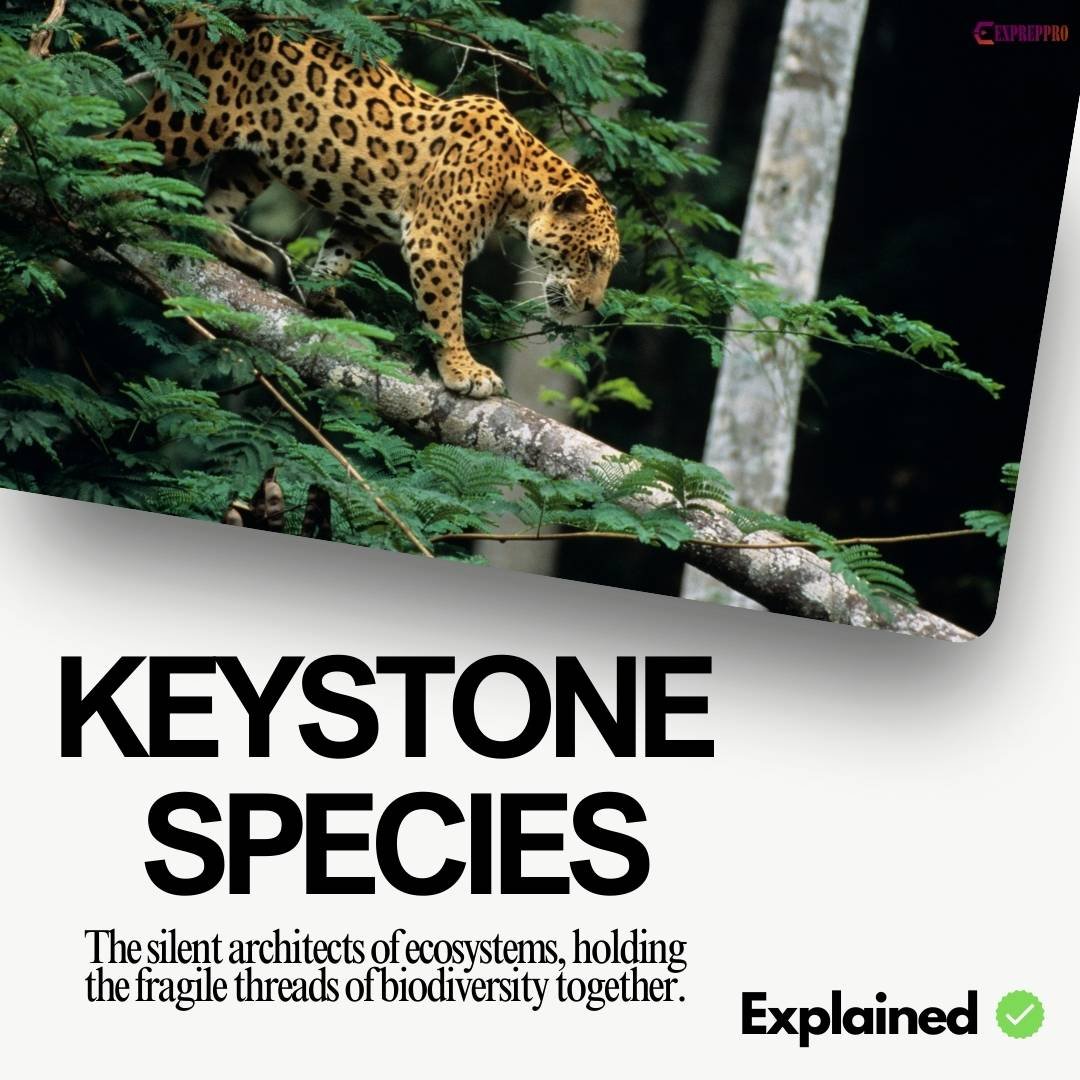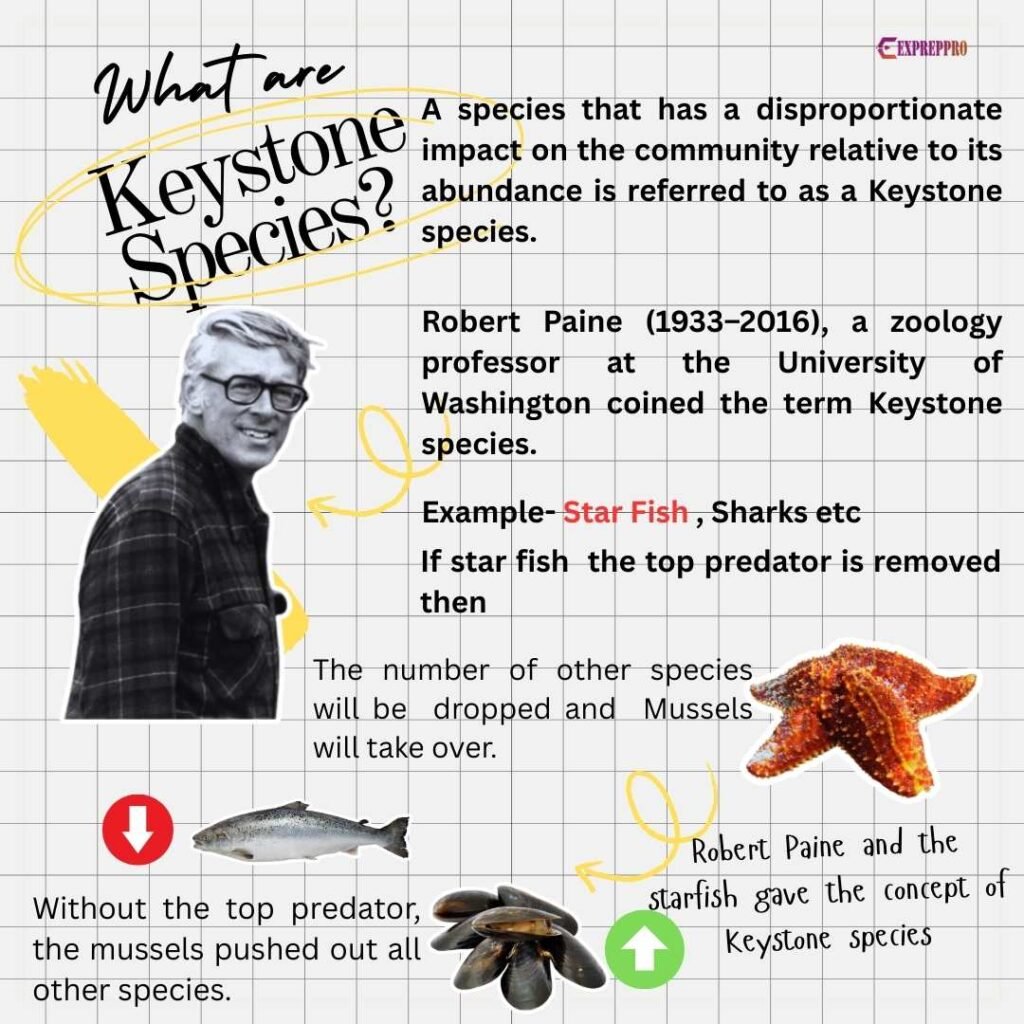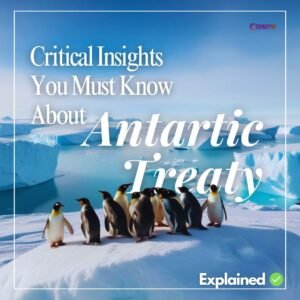
Keystone species are organisms with a disproportionate impact on the community relative to their abundance. Keystone species dominate energy flow and affect the structure or function of the ecosystem. Examples of Keystone species include Starfish, Beaver, Elephants, sea Otters, Alligators, Bees, Wildebeest, Bison, Corals, etc.
What is the meaning of Keystone?
You may have seen an archway made of stones. If you look into the structure in detail, you can notice a single piece of stone at the top of the arch that locks all other pieces into one. This single stone is responsible for holding the arch together. Without this central piece, the arch will collapse, and this piece is known as Keystone.
In short, it is a central stone at the top of an arch that locks the whole structure together.
Who invented the Keystone species?
Robert Paine (1933-2016), a zoology professor at the University of Washington, developed this ecological concept and coined the term Keystone species.
His studies in the tide pool on the Pacific coast helped him identify the Keystone species concept.

Robert Paine, Starfish and his studies with tidepools.
While observing the tide pools, Robert Paine realised that there were filter feeders and scavengers, algae and other plants. But there was a carnivorous species at the summit of the food chain, the Starfish or Pisaster ochraceous. This species is the keystone species in the rocky intertidal communities along the west coast of North America.
This species is a large starfish which resides in the intertidal zone. It weighs one to one and a half kilograms. Interestingly, it feeds almost exclusively on Mussels, along with Barnacles, Snails, etc. This feeding helped other species to survive.
Robert Paine’s experiment.
Robert Paine selected one tide pool and removed the Starfish from it. If a Starfish reappeared in his selected tidepool, it was removed.
Within 18 months, the tide pool structure changed, and the species number decreased.
After six years, Mussels advanced downwards about one meter vertically. This change created a dramatic effect. At least 25 species of large invertebrates and Algaes were eliminated.
Within 8 years, the tide pool contained only Mussels.
Role of Starfish as a Keystone species.
As a Keystone species, Starfish can control Mussels but cannot eliminate them entirely for three reasons.
- Mussels cannot be eliminated from the intertidal zone because Starfish cannot consume the Musels attached to the top layer of the intertidal area.
- They cannot consume large Mussels. Usually, Starfish eat mushrooms by pulling their two shells apart. If it is a large one, Starfish cannot open the shell by exerting force.
- The reproductive rate of the Mussel population is also a reason.
After the experiment, two important features were also revealed.
- Some primary producers or consumers can monopolise a basic resource like space.
- The resource monopolist is itself preferentially consumed or destroyed by the keystone predator or keystone herbivore.
This experiment was repeated in New Zealand and Chile. The results were the same.
Keystone species characteristics.
- Keystone species were present in all major ecosystems like Tundra, Oceans, forests, deserts, Grasslands, etc. All have Keystone species.
- Their effect on the community is disproportionate to their numerical abundance. The removal of keystone species can result in a significant change or loss of diversity. For example, If Sharks are removed, then Coral reefs will be affected. Sharks consume fish that prey on herbivorous fish. These herbivorous fishes eat and control algae that harm corals.
- They promote coexistence by reducing competition among species and controlling the population. The case of Starfish and Mussels is an example.
- Disease-producing organisms cannot function as keystone species. The net result will affect the wider community, whether it affects predators or herbivores.
- Keystone species can provide vital resources to a range of organisms at a time of scarcity. For example, Primates in Western Brazil get food from small plant species during the dry season.
- Microbes can also function as keystone species. For example, in Hawaii, the invasive nitrogen-fixing symbiotic microbe Morella faya can act as a keystone species in nitrogen-deficient forest communities developing after Vulcanisum.
- Mutualistic organisms can act as a Keystone for each other. The elimination of one species can destroy the other. Example Fig Wasp and Ficus tree.
- Organisms can act as Keystones by changing the physical environment in ways that release resources for other species. For example, Elephants. Elephants are destructive feeders. They uproot, break, and destroy trees and shrubs. This activity favours the growth of grasses and the reduction of trees.
- Predators can function as Keystone species. Many large carnivores are top predators and have the capacity to act as Keystone species. Wolf is an example. Sea Otters are another example. Sea Otters consume Se Urchins, which eat Kelps. If Otters are absent, overgrazing by Urchins results in the loss of Kelps.
- The loss of Keystone species will lead to a series of extinction effects. This is known as the extinction cascade.
Primary Keystone Species.
These Keystone species are sessile, primary producers on the tropic levels and attract biodiversity directly by providing food.
These species can propagate and disseminate quickly.
Even the dead components of these species help as Keystone habitats.
Their total destruction will result in a total loss of dependent biodiversity.
Negative Keystone Species.
These Keystone species are mobile, primary or secondary consumers positioned at the top of the tropic level.
They are not so efficient and are difficult to breed. Dead components of these organisms are useless for the same Keystone functions.
The total removal of these species may partially influence biodiversity.
Wolves as Keystone species and Yellowstone National Park: A case study.
The new settlers of the US viewed Wolves as a threat and a safety issue. Due to this concern, they started to hunt Wolves throughout the 1800s and into the early 1900s. They even hired professionals called “Wolfers” to hunt Wolves. Interestingly, the government also backed this anti-Wolf attitude.
Due to the excessive hunting, the last Wolf in Yellowstone National Park was killed in 1926.
After the introduction of the Keystone species concept, the government recognised its importance. They passed the Endangered Species Act of 1973. After this, Wolves got legal protection from hunting.
However, the Yellowstone ecosystem suffered a lot without the top predator. So, in 1995 and 1996, 31 Grey Wolves were reintroduced into the Yellowstone National Park from Canada.
Now, what was the reason for this reintroduction?
Without predators, the Elk population increased rapidly from 3000 in 1968 to 19000 in 1994. The anti-culling policy also favoured this population increase.
Elk’s overgrazing of Aspen or Populus tremuloides also resulted in its decline. This Aspen is required for the survival of Elk, Beavers, and birds.
After the reintroduction, the Elk population decreased, and better biodiversity was observed in many parts of the park.
The experience from Yellowstone demonstrates the importance of Keystone species and their role in the restoration of biodiversity. The reintroduction of Wolves created astonishing ripple effects and indirect consequences. For example, the park is now home to nine Beaver colonies.



